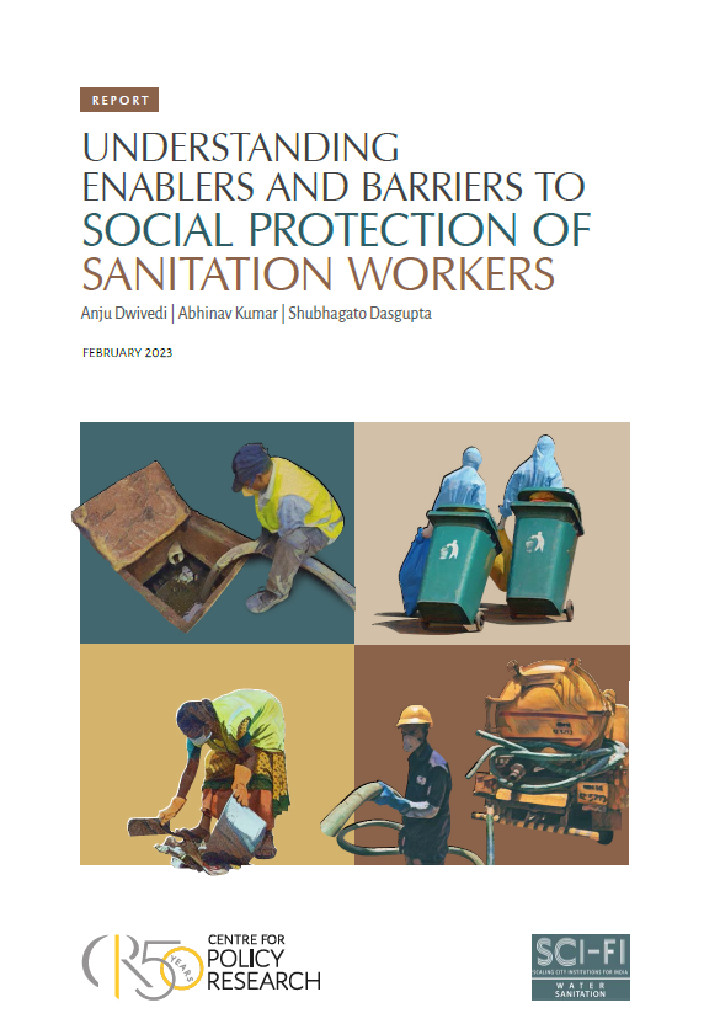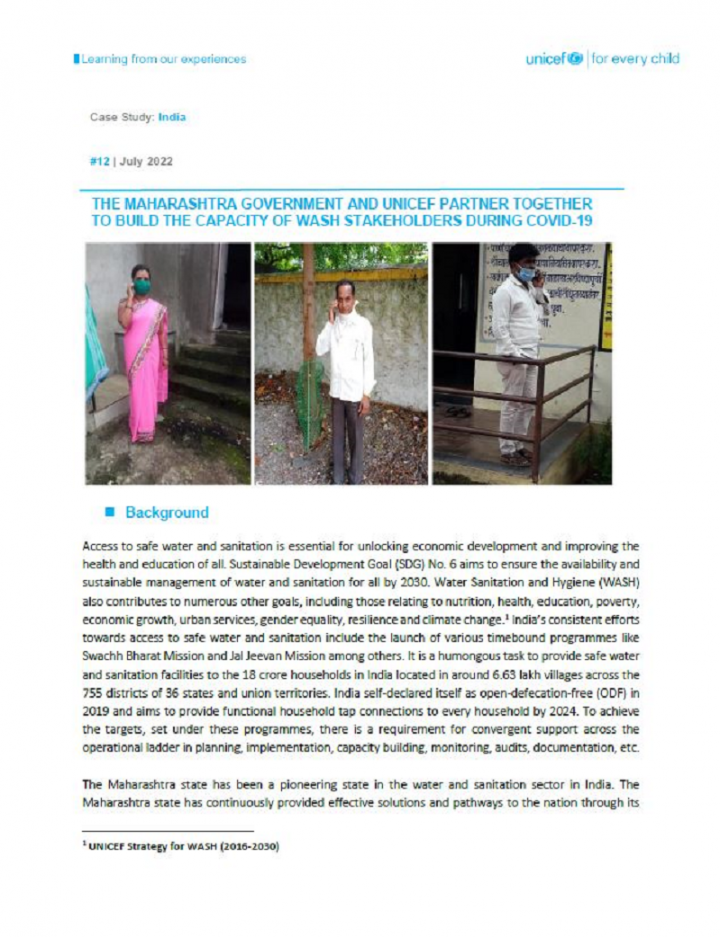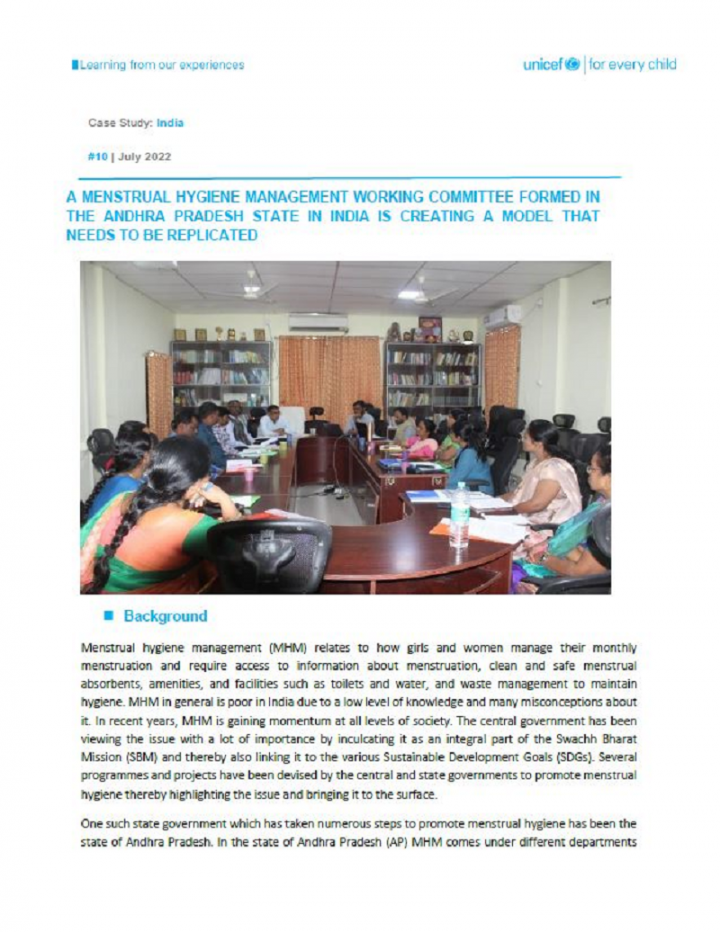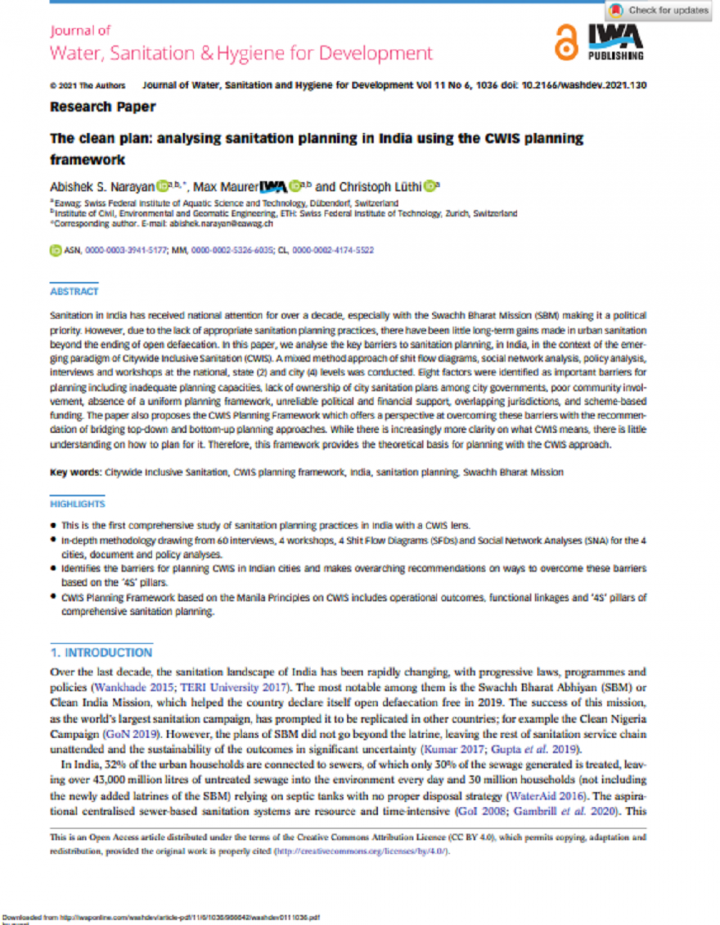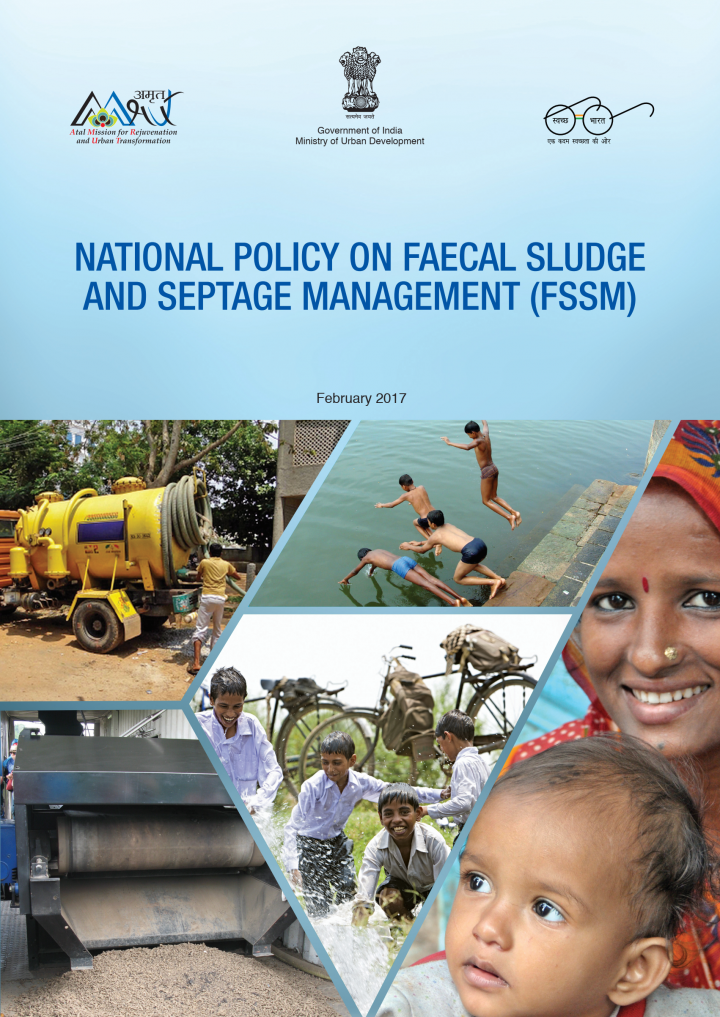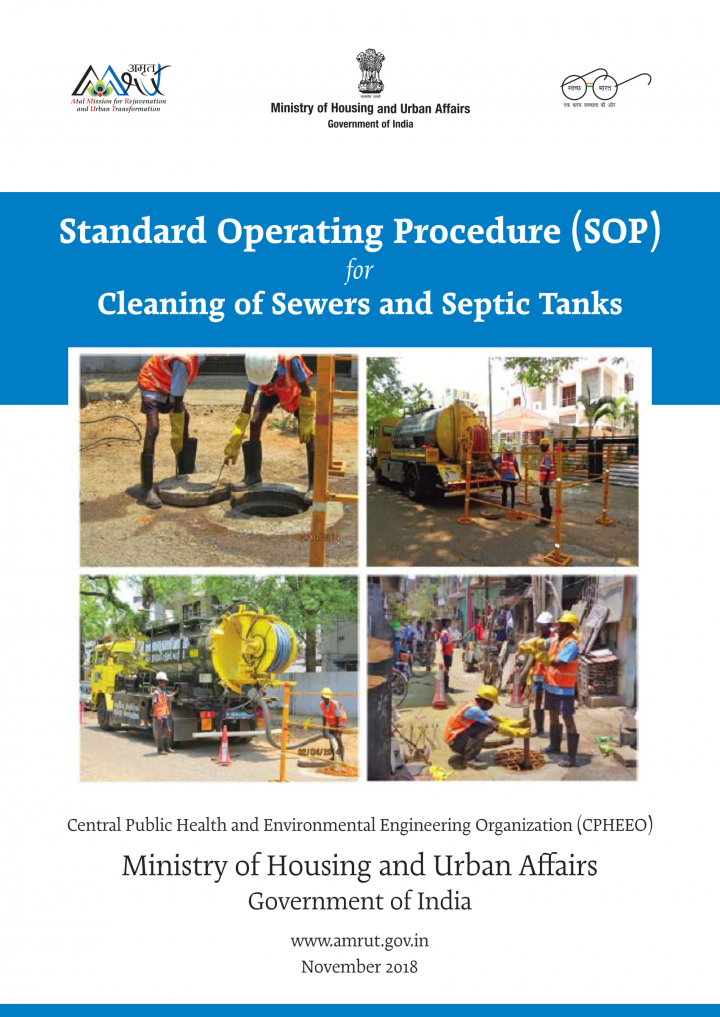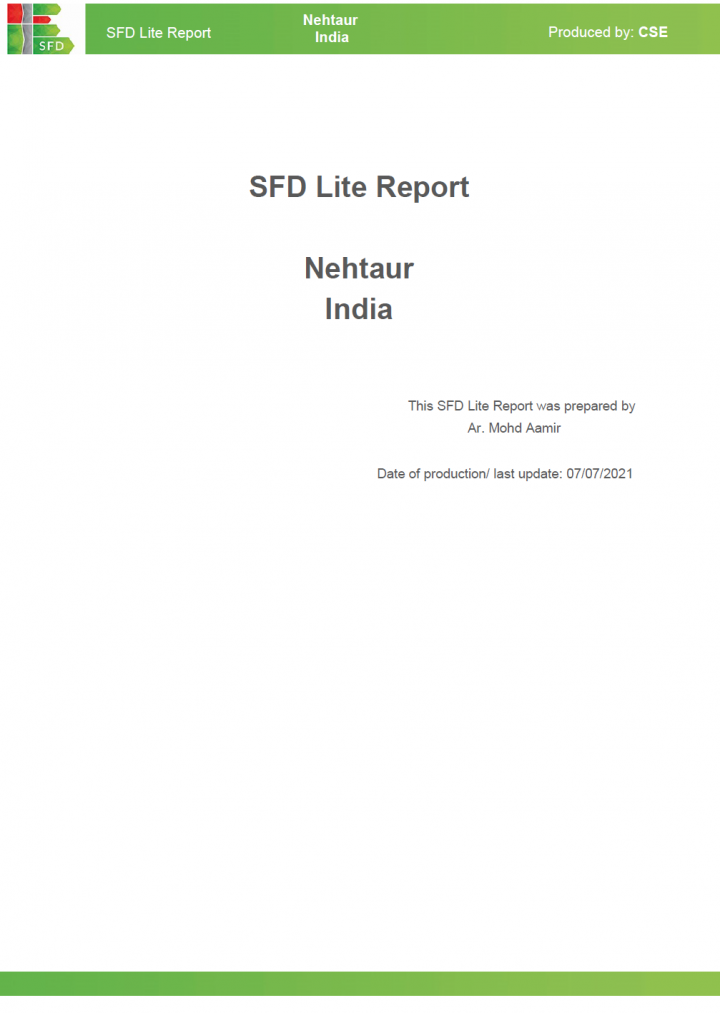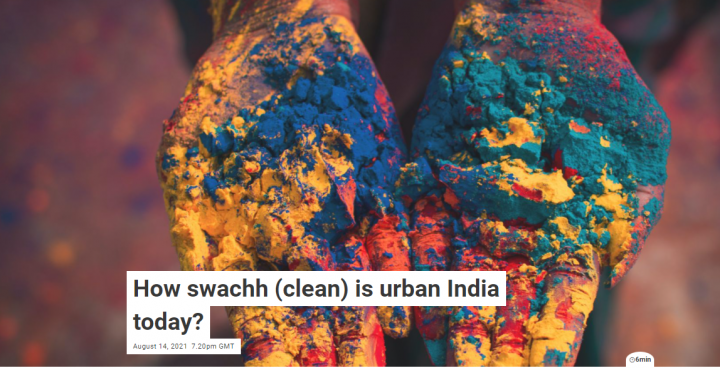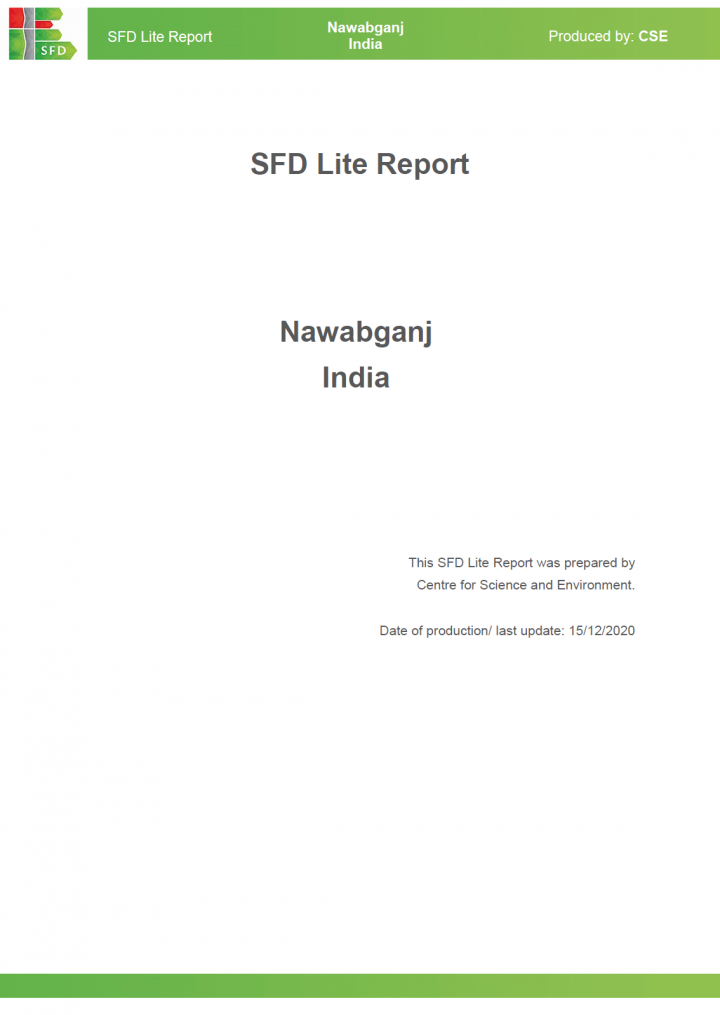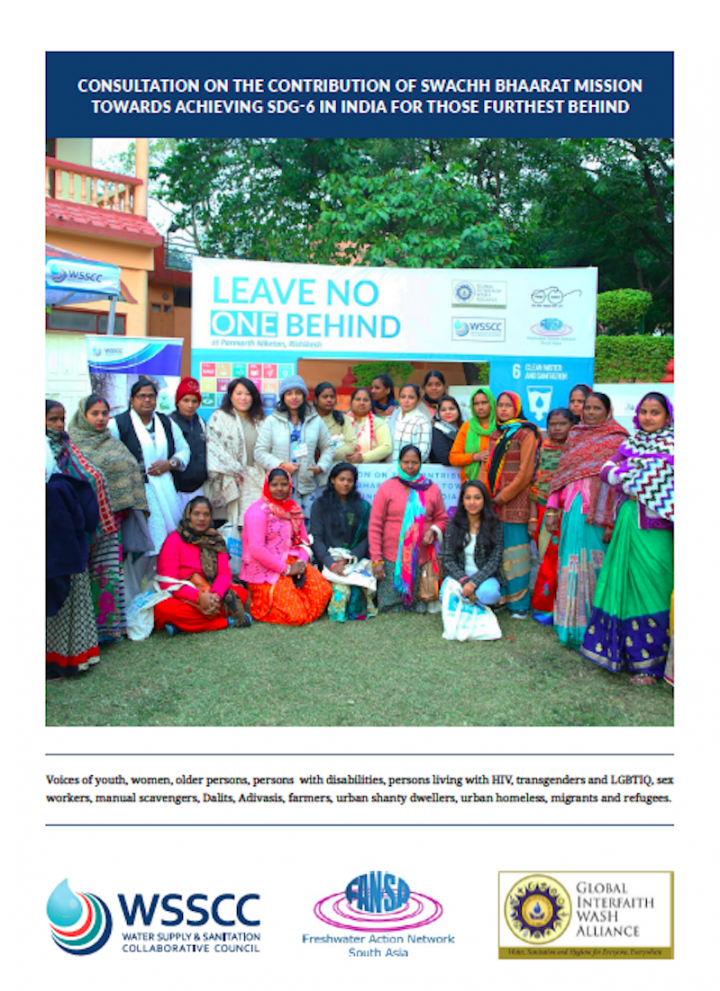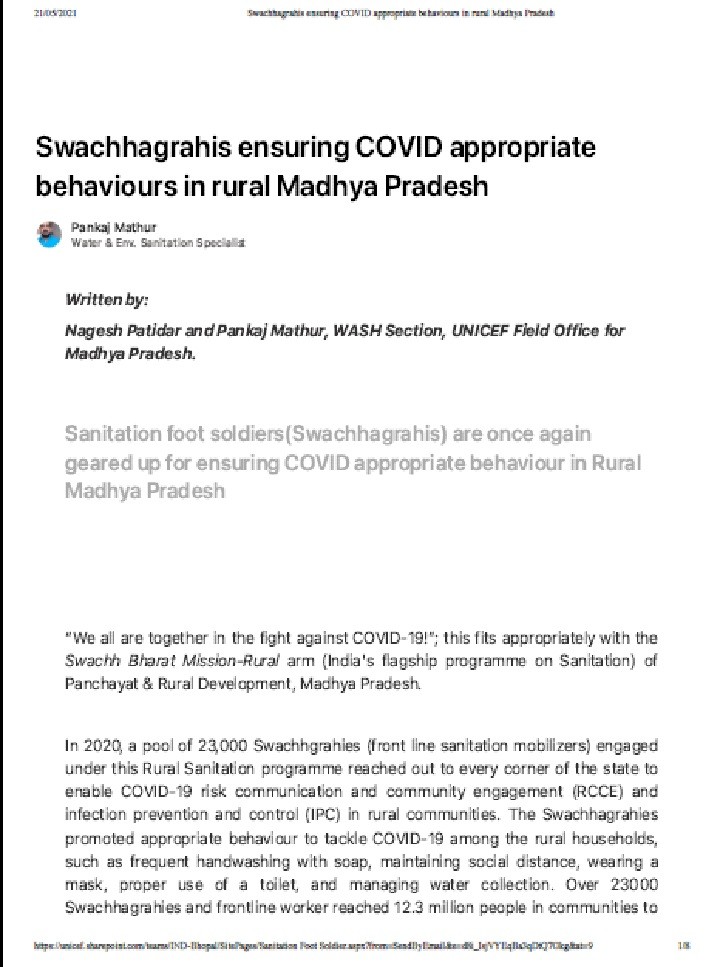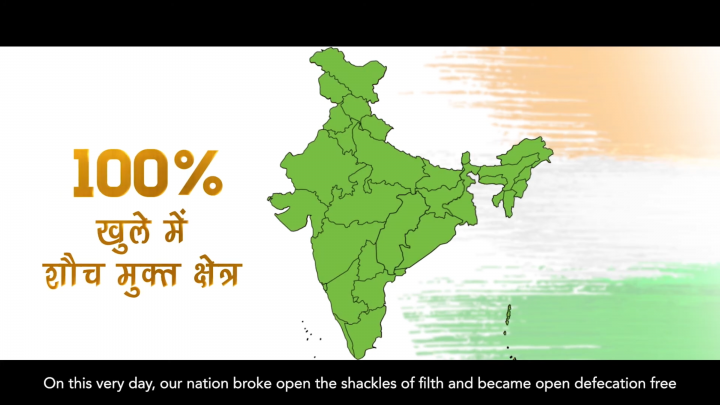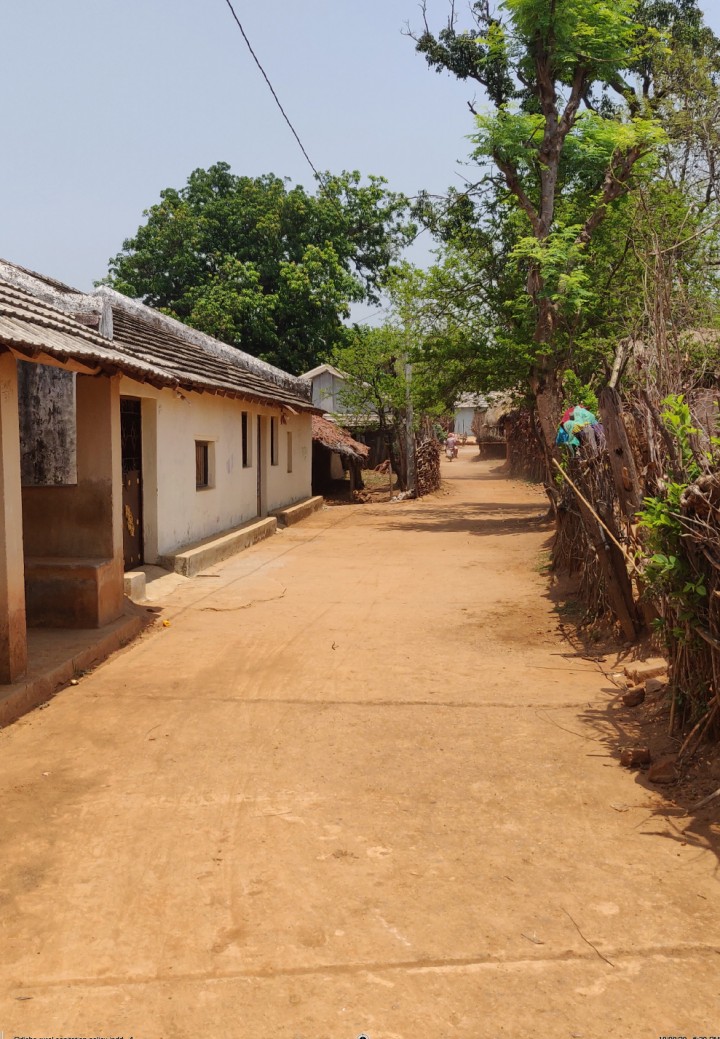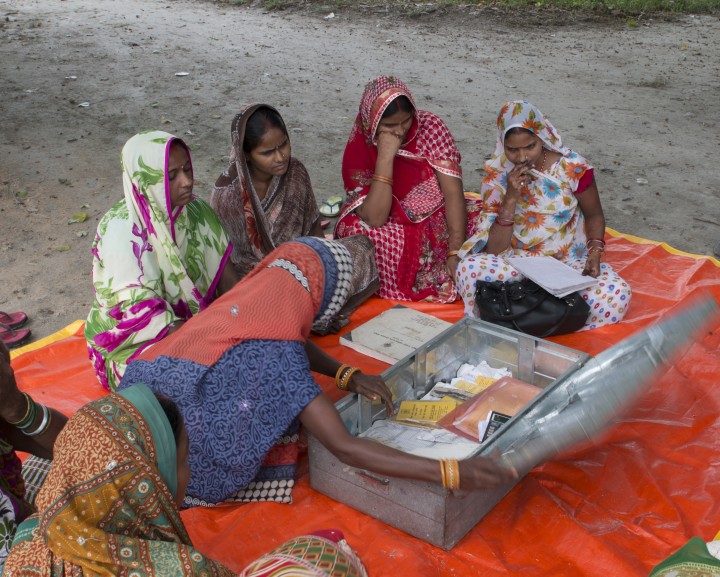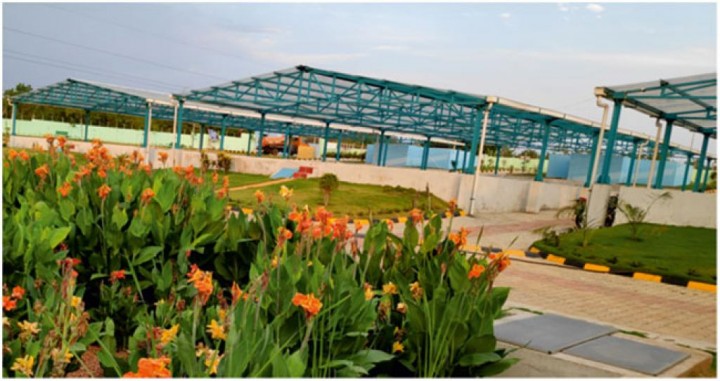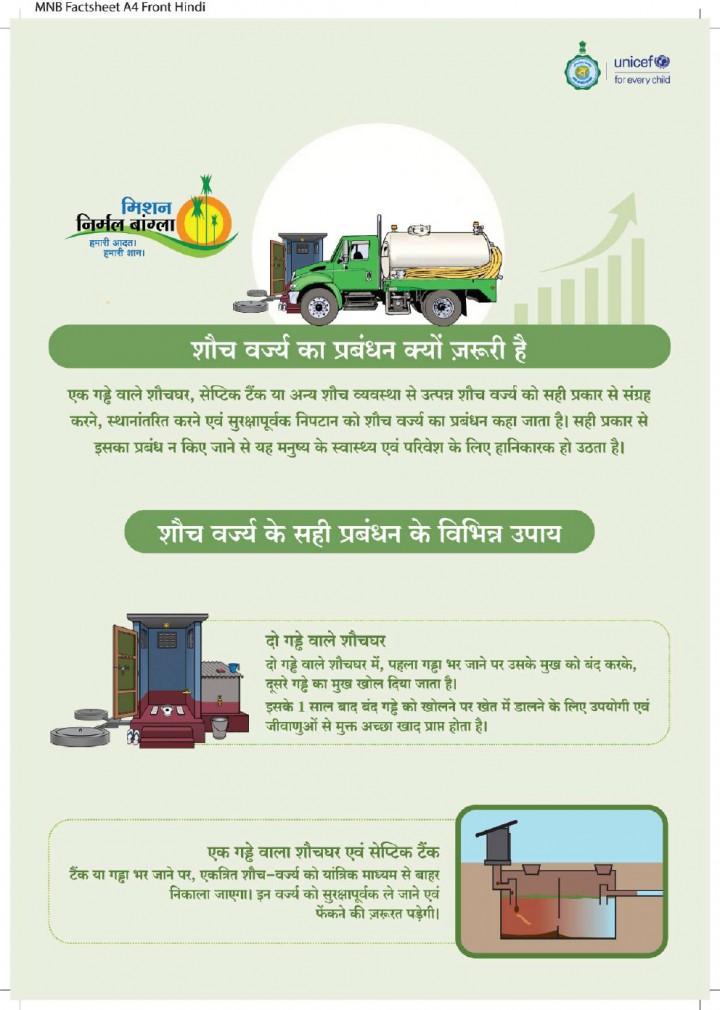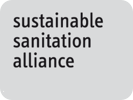Anju Dwivedi, Abhinav Kumar, Shubhagato Dasgupta (2023) Understanding Enablers and Barriers for Social Protection of Sanitation Workers in Dhenkanal Odisha, India
In the past decade, India's Swachh Bharat Mission has significantly improved sanitation infrastructure, including toilets and treatment plants. However, sanitation workers, essential to maintaining safe sanitation, face hazardous conditions, discrimination, long hours, and low social status. To address these issues, the Government of India and state governments have launched various social protection programs. This study explores the challenges and enablers in accessing these benefits for […]
Nitya Jacob, Sunetra Lala (2022) Synthesis Document: Sustainable Solid Waste Management Systems in Rural Areas
As the Swachh Bharat Mission of the Government of India expands, solid waste management will have to keep pace. This thematic discussion on the India Chapter of SuSanA examines the readiness of local government institutions, tasked with the job, to effectively plan and implement solid waste management systems.
Vharkat, B. (2022) THE MAHARASHTRA GOVERNMENT AND UNICEF PARTNER TOGETHER TO BUILD THE CAPACITY OF WASH STAKEHOLDERS DURING COVID-19
Access to safe water and sanitation is essential for unlocking economic development and improving the health and education of all. Sustainable Development Goal (SDG) No. 6 aims to ensure the availability and sustainable management of water and sanitation for all by 2030. Water Sanitation and Hygiene (WASH) also contributes to numerous other goals, including those relating to nutrition, health, education, poverty, economic growth, urban services, […]
Selvaraj, J. (2022) A MENSTRUAL HYGIENE MANAGEMENT WORKING COMMITTEE FORMED IN THE ANDHRA PRADESH STATE IN INDIA IS CREATING A MODEL THAT NEEDS TO BE REPLICATED
Menstrual hygiene management (MHM) relates to how girls and women manage their monthly menstruation and require access to information about menstruation, clean and safe menstrual absorbents, amenities, and facilities such as toilets and water, and waste management to maintain hygiene. MHM in general is poor in India due to a low level of knowledge and many misconceptions about it. In recent years, MHM is gaining […]
Narayan, A.S., Maurer, M. and Lüthi, C. (2021) The clean plan: analysing sanitation planning in India using the CWIS planning framework
Sanitation in India has received national attention for over a decade, especially with the Swachh Bharat Mission (SBM) making it a political priority. However, due to the lack of appropriate sanitation planning practices, there have been little long-term gains made in urban sanitation beyond the ending of open defaecation. In this paper, we analyse the key barriers to sanitation planning, in India, in the context […]
Government of India Ministry of Urban Development (2017) National Policy on Faecal Sludge and Septage Management (FSSM)
According to Census 2011, India’s urban population is 377 million or 31% of the total population, which is expected to increase to 600 million by 2031. The Census 2011 also showed that in 4,041 statutory towns, 7.90 million households (HHs) do not have access to toilets and defecate in the opena1. Under the Swachh Bharat Mission (SBM), it is envisaged that nearly 80% of these […]
Central Public Health and Environmental Engineering Organization (CPHEEO) (2018) Standard Operating Procedure (SOP) for Cleaning of Sewers and Septic Tanks
As per the 2011 census, the share of urban population is 31.2% as against 28% of 2001 census of the total population of the country which is expected to be 50% by 2050. This increase in population has created a significantly enhanced demand on urban sanitation, inter alia. As per the 2011 Census, 81.4% households have toilet facilities within their premises. Out of this, 32.7% households have water […]
CSE (2021) SFD Lite Report Nehtaur India
Nehtaur is a small town in Bijnor District, Uttar Pradesh and is located 26 km to East of BijnorNehtaur is a small town in Bijnor District, Uttar Pradesh and is located 26 km to East of Bijnorcity, District Headquarters (Figure 2). According to Census 2011, Nehtaur had a populationof 47,834 residing in 7,438 households (HHs). The population of the city as per SwachhSurvekshan (country wide […]
Luthra, B., Karthykeyan, D. (2021) How swachh (clean) is urban India today?
A rapid assessment of sanitation in Urban India using a National SFD brings out the reality of actual situation on ground and also maps the gaps in various stages of the sanitation chain. Given that the next phase of Swachh Bharat Mission is around the corner, it would be worthwhile to extract learning from the Shit Flow Diagram of Urban India, so that interventions can […]
Centre for Science and Environment (2020) SFD Lite Report Nawabganj India
Nawabganj is a town and a nagar panchayat in Unnao district which is situated between Lucknow and Kanpur in the Indian state of Uttar Pradesh. It belongs to Lucknow Division. It is located 24 Km towards East from District head quarters Unnao. It is a Block head quarter. Nawabganj was established by Nawab Ramzan Ali (Nawab of Sheesh Mahal Estate Lucknow) in 1858. He established […]
WSSCC (2019) Consultation on the Contribution of Swachh Bhaarat Mission towards Achieving SDG 6 in India
Voices of youth, women, older persons, persons with disabilities, persons living with HIV, transgenders and LGBTIQ, sex workers, manual scavengers, Dalits, Adivasis, farmers, urban shanty dwellers, urban homeless, migrants and refugees. Leave No One behind is the core principle of the SDGs and the 2030 Agenda. A consultation was held in India in late 2019 involving 14 groups identified by Niti Aayog as the furthest […]
Nagesh, P.; Pankaj, M. (2021) Swachhagrahis Ensuring COVID Appropriate Behaviours in Rural Madhya Pradesh
In Madhya Pradesh, UNICEF and the state government worked together to activate and train sanitation fieldworkers to spread information about CABs.
UNICEF Maharashtra and Water.org (2021) An Ecosystem for WASH Microlending in India
This field note provides an overview of the WASH and health financing project that is being implemented in the state of Maharashtra, India – The Ecosystem Approach. The project integrates WASH behaviour change communication (BCC) with rural household microlending programs to drive household water and sanitation access through loans. This initiative aims to establish open defecation free (ODF) communities supporting the larger national programme, the […]
Kumar, N. (2020) SFD Lite Report - Sidhauli, India
Sidhauli is a town and a Nagar Panchayat in Sitapur District in the state of Uttar Pradesh. It is a crowded town situated near Lucknow. The Sidhauli city is divided into 14 wards. The Gomti River flows through the town. As per Census 2011, Sidhiauli has a population of 24,976 residing in 4,153 households. The population of the city, as per Swachh Survekshan (country wide annual […]
UNICEF (2019) Training Manual on Solid and Liquid Waste Management
After achieving the target of universal coverage of individual household toilet, Swachh Bharat Mission Gramin is working towards addressing the menace of solid and liquid waste management (SLWM) to ensure clean and healthy villages. Government of Chhattisgarh has taken a sustainable approach to address solid and liquid waste in the state. SBM-G has adopted decentralized processes for waste management and conservation of natural resources. The Program […]
(2020) India Moving from ODF to ODF-S
As the Swachh Bharat Mission ventures into the second phase of its implementation - moving from ODF to ODF Plus – the Ministry of Jal Shakti released a programme inception film that shows how India will transition its efforts sustain the gains of the first phase and achieve a clean living environment through faecal and plastic waste management. The film has been jointly produced by […]
UNICEF (2020) Odisha Rural Sanitation Policy
The Odisha Rural Sanitation Policy 2020 provides a framework aligned to the 5T guiding principles (Teamwork, Technology, Transparency, Time leading to Transformation), with an overarching vision of achieving Swachha Odisha, Sustha Odisha. Accordingly, it sets out a course of action towards (i) sustaining toilet access, usage and hygiene practices, and (ii) safe management of solid and liquid wastes. Central to this approach is ‘people’s participation’ […]
Department of Drinking Water and Sanitation, Government of India (2019) Five Day Manual for Panchayati Raj Institutions on water and sanitation
The Government of India (GoI) has launched an iniative to strengthen the capacity of Panchayati Raj Institutions (PRIs) to ensure the sanitaton gains achieved under the Swachh Bharat Mission (Grameen) are sustained. The initiative includes ODF status of communites, taking up of an open defecation free plus (ODF Plus) agenda and improving access to safe and secure water supply through the Jal Jeevan Mission (JJM) […]
UNICEF and Centre for Policy Research (2020) Towards a Sustha and Swachha Rural Dhenkanal Institutionalizing Faecal Sludge Management for Achieving ODF Plus
As a first step toward the goal of clean and sanitised villages, the state has issued the Odisha Rural Sanitation Policy in October 2020 that guides and enables sanitation interventions in rural areas over a ten-year horizon. In operationalising the Policy and in line with the objectives of SBM-G Phase II, Dhenkanal district in the state, with support from UNICEF and the Centre for Policy […]
Government of West Bengal and UNICEF (2020) FSM - Its Need, Process, and Roles of Village Institutions
West Bengal has developed a poster that depicts the techniques involved in managing faecal waste and lists the roles and responsibilities of village functionaries in adopting and promoting FSM in the second phase of the Swachh Bharat Mission. In Hindi, this two-page poster provides an overview for the public on FSM.
